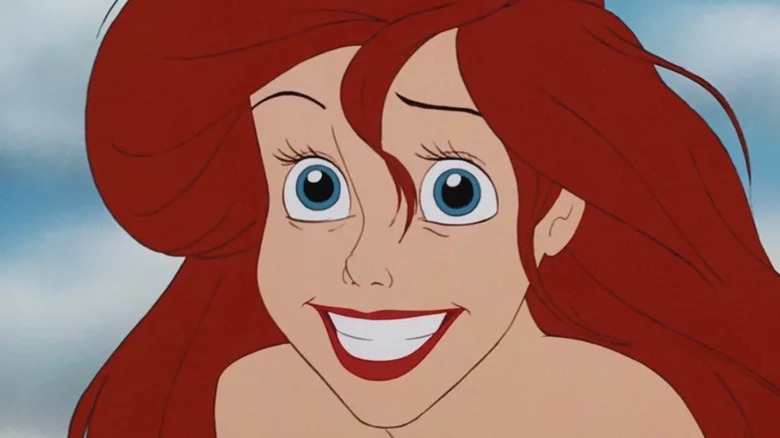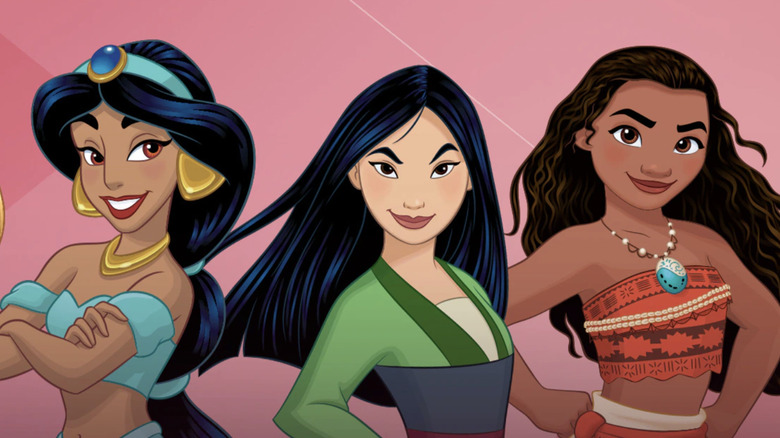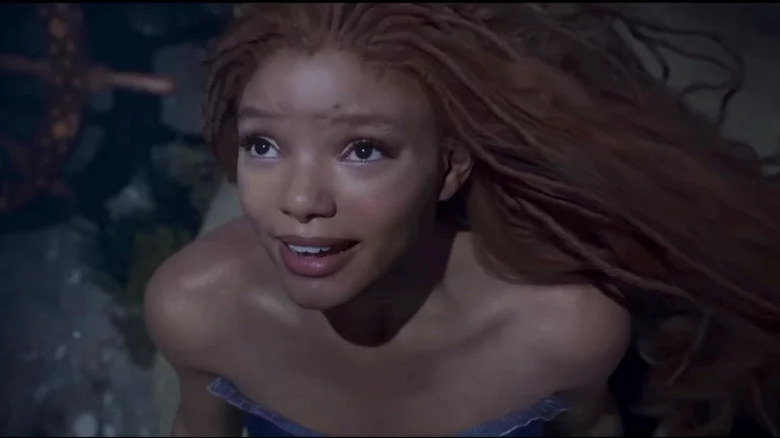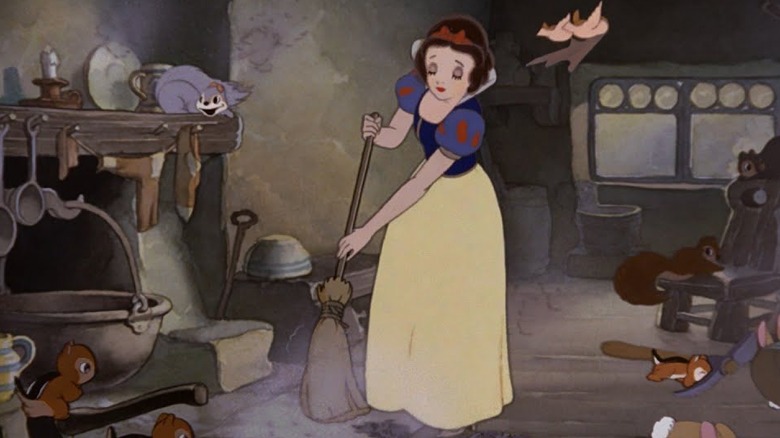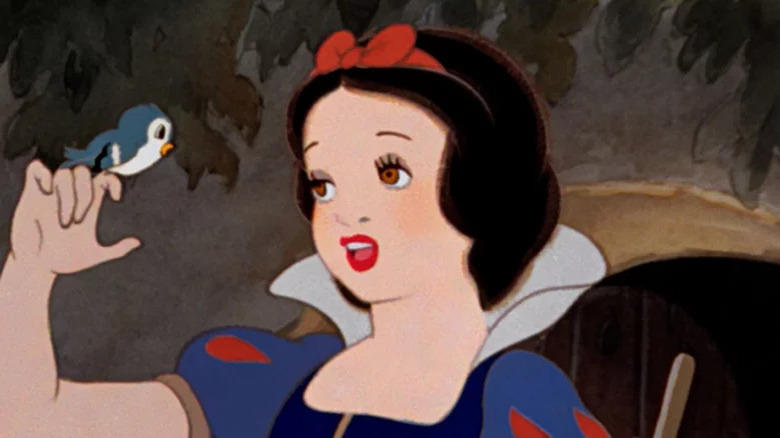Author Emily Zemler Discusses What Makes Disney Princess: Beyond The Tiara Such A Special Read – Exclusive Interview
Disney Princesses are timeless. From Snow White and Cinderella to Merida and Moana, every kid — and kid at heart — knows their names.
In recent years, Disney has started reimagining some of its most famous stories with live-action adaptations, including "Cinderella," "Beauty and the Beast," and "Mulan." A buzzworthy remake of "The Little Mermaid," starring Halle Bailey, is set for release in 2023, while "Snow White," starring Rachel Zegler, is slated for the following year.
Now, the Disney Princesses have been explored — and explained — like never before in the recently released hardcover book "Disney Princess: Beyond the Tiara" by Emily Zemler. Featuring concept art, memorabilia, and original interviews, the publication explores the legacies of the princesses and what they represent today. With 200 illustrations across almost as many pages, "Disney Princess: Beyond the Tiara" deep-dives into how the princesses became the cultural icons we know today.
During an exclusive interview with Looper, author Zemler delved into what went into making the book, why she views each and every princess as a feminist, and how the upcoming live-action films are going to change the pop-culture landscape.
The book explores how culture influenced the princesses and vice versa
What was the inspiration behind this book?
It's actually a bit of a boring answer. The former publisher at Quarto and Epic Ink had this idea to do a book that would be looking at the cultural legacy of the Disney Princess, and the reasoning was that there have been a lot of making-of books and every film pretty much has an art book. There have been a couple of other books written about the Disney Princesses, but they've looked more at what the process was behind the animation and not so much what was going on in our lives that would've impacted how they were created and what the tone and characterization of each character would be.
This particular publisher presented me with a one-paragraph marketing blurb and the title and said, "Here you go. What can you make of this?" First I was like, "Oh, my gosh." Then my thought process was to not just look at what culturally influenced each character but to also look at how they were their own cultural influences and how that has evolved over time. I wanted to break it up into thematic ideas [of] where they have been the most impactful, which is why the book looks at things like fashion and merchandising. It was really interesting because I didn't know a lot of the information that's in the book when I started, but you start to see that cultural impact and the scale and the sheer volume of it, and it's pretty incredible.
Live-action Ariel represents a new era of diversity and inclusion
Jodi Benson, the original voice of Ariel from the animated "The Little Mermaid," wrote the foreword. What does Ariel mean to you? And are you looking forward to seeing what Halle Bailey does with the role in the upcoming live-action version?
Ariel is my personal favorite Disney Princess, and it's because when [the animated movie] came out, I was a young kid, and she spoke to me. The mermaid aspects spoke to me. I liked how she felt curious and rebellious and she was willing to go to great lengths to indulge that curiosity. The more you look at the story of "The Little Mermaid" — while it does maybe have some things in it that we wouldn't include in a film today — it is ultimately about a girl who wants something so badly, she will do anything to get it. That resonates really strongly with people, especially young women. She was always my favorite because she felt unstoppable. She was not scared to go into a shipwreck and come face to face with a shark, which is a scary thing when you're a young kid.
As for how Halle is really, really exciting, she can capture the exact same traits that we loved in the original animated version, but she can bring them to an audience whose tastes are contemporary. What's important to us now is different from what was important to us when the original was made. One of the things that is important to us now, and should be important to us now, is diversity and inclusion. I think we all can recognize that impact when we see those videos that are going around of the young Black girls who see the trailer and see themsel[ves] on screen for the first time. That is an undeniable bonus of inclusive casting, where someone actually gets to look at the screen and it looks back at them.
In general, how do you feel about the recent live-action remakes of classic Disney Princess movies and the way they update these stories for a different medium and a modern audience?
Some have been more successful than others, and I think the filmmakers would probably agree with that. Disney likes to call them reimaginings rather than remakes. The idea is not that you are redoing something that exists; it's that you're taking an existing story and looking at both the original fairytale and the original animated film and creating a new version. That's helpful in how we discuss them, because if we're thinking that we're going to get a live-action, exact shot-for-shot remake of some of these, that's not really possible. Plus, the animation's so beautiful, why would you do that?
While some of them have not been so perfect and they haven't exactly felt as fresh as they could, the ones that are coming out now feel really exciting, like Halle as Ariel and Rachel Zegler as Snow White, because instead of making the same thing over and over again, we're actually listening to what we want in culture and creating something new. I don't see why we would keep remaking the same thing over and over instead of evolving it.
It was important to cast the princesses as 'feminists' and 'heroes'
Your book suggests a reappraisal of classic Disney Princesses, and you frequently describe them as "heroes" and "feminists." How do you feel Disney Princesses subvert stereotypes?
That's a really good question that I spent a lot of time thinking about while writing this book. There have been times when there was a lot of backlash against the Disney Princesses or the princessification of children's toys and costumes and the way that children responded to the beautiful dresses and crowns. What's important to remember, though, is that the definition of feminism is equality, which means that any iteration of a woman should be welcomed in our culture. Whether that is someone who enjoys housework and cleaning, like Snow White, or someone that goes on adventures, like Moana, those are all equally valid versions of feminism. That's where these princesses are so useful and impactful — they show us all the different ways we can exist, and they underscore how everything is valid, every version of a person is worthy and worthwhile.
When we talk about feminism, it's not because the princesses have suddenly become something else. It's because the collection of them as a whole represents all women, or all women-identifying people, and the discussion of them as [heroes] was important in the book. During the revision process, Disney asked us to change any time we used "heroine" to "hero" so that it would feel more equal. That was a little bit tricky when I was trying to differentiate between Disney heroes like Aladdin [and] Disney heroes like Jasmine. But it helps to elevate the princesses and put them on the same level as other characters. Why couldn't they be considered [heroes]?
In researching this book, you must have acquired some pretty cool collectibles. Which is your most cherished, and why?
You would think that I would have bought all of this stuff, but I resisted. I wanted to buy all of it, and I did go into places like Target and Walmart to see the scope of the toys and merchandise and nearly walked out with some of the dolls.
But the one thing I wanted [is something] I don't really know how to get. You'd have to find [someone selling it]. We were not allowed to include this in the book, and you'll understand why when I describe it. It's from when "Snow White and the Seven Dwarfs" came out. There was a game that was released alongside it, and in the game, you have a little gun and there are seven dwarfs who are standing up, and you shoot them like targets. I found a photo of it. It was absolutely incredible, and it was definitely something that I requested a photo of during the research process, but it was a no-no because it isn't something we want kids to be playing. But I would love to get a version of that game someday if I can ever find it.
I will say I also really like the Rapunzel bow and arrow, which is something you can still buy. I also think they made a "Brave" bow and arrow when that came out. I like that girls can go out and buy a bow and arrow.
Snow White, not Star Wars, originated mass merchandising
These characters were each created to be the protagonist for their own movie, but sometimes you'll see them grouped together for a product line or even cameos, like in the second "Wreck-It Ralph" movie. What do you think is fun about seeing the princesses interact with each other?
Originally, when the Disney Princess franchise was created, they were not allowed to be grouped. The idea was to bring them together as characters as a merchandising and marketing strategy. But early on, they were still marketed individually. They would have their own books, their own costumes. They wouldn't be looking at each other in merchandise. There were a lot of rules about how they had to be presented. Over time, you'll notice in the merchandising that they become more connected. They look at each other, they interact with each other, they're in books together, they share things. There's a Disney Princess castle you can buy, where they all live together. It's so much fun to see these characters from different worlds with different characteristics interacting with each other.
And it's very exciting to see something like "Wreck-It Ralph," where they all come together. Discerning readers [of "Disney Princess: Beyond the Tiara"] will notice that that's not exactly in the book. It was in the book at one point, but there were some edits requested by members of Disney. Still, that was a really important moment in pop culture for Disney Princess fans. I don't know how [or] if we'll see more of that in the future, but I would personally like to see more of the princesses interacting because they are all fun and carefully created characters who have complex personality traits, and it's fun to see them coming up against each other in that way.
What was the most surprising thing you learned while researching and writing this book?
There were a lot of things. One of the big ones was in researching how they were merchandised and the history of Kay Kamen, who I talk about in the book. He was the man who Walt Disney hired to merchandise Disney. He came up with how Mickey Mouse merchandise was released, and he was instrumental in the "Snow White and the Seven Dwarfs" merchandising.
There's a common misconception in film history that "Star Wars" originated mass merchandising, but that is not the case at all. "Snow White and the Seven Dwarfs" had an intense amount of merchandise, including, as you see in the book, ham, bleach, and lamps. If you wanted something, you could get it with Snow White or a dwarf on it. I found that really surprising. I thought it was crazy that you could have gotten that many things.
Today, we can get a lot of things and there's a lot of toys, but it's a different society now, and there are a lot more shops, and there's a lot more online availability. To think that in the 1930s you could have acquired all of those products if you were a fan of the film is really interesting. There's this very knowledgeable person at Disney named Libby Spatz, and she is the librarian of all the merchandise. She knows all about it, and she's considering writing a book about Kay Kamen, which I hope she does because he is a fascinating figure. If people don't know him, they should go look him up.
"Disney Princess: Beyond the Tiara," published by Epic Ink, an imprint of The Quarto Group, is out now.
This interview has been edited for clarity.
